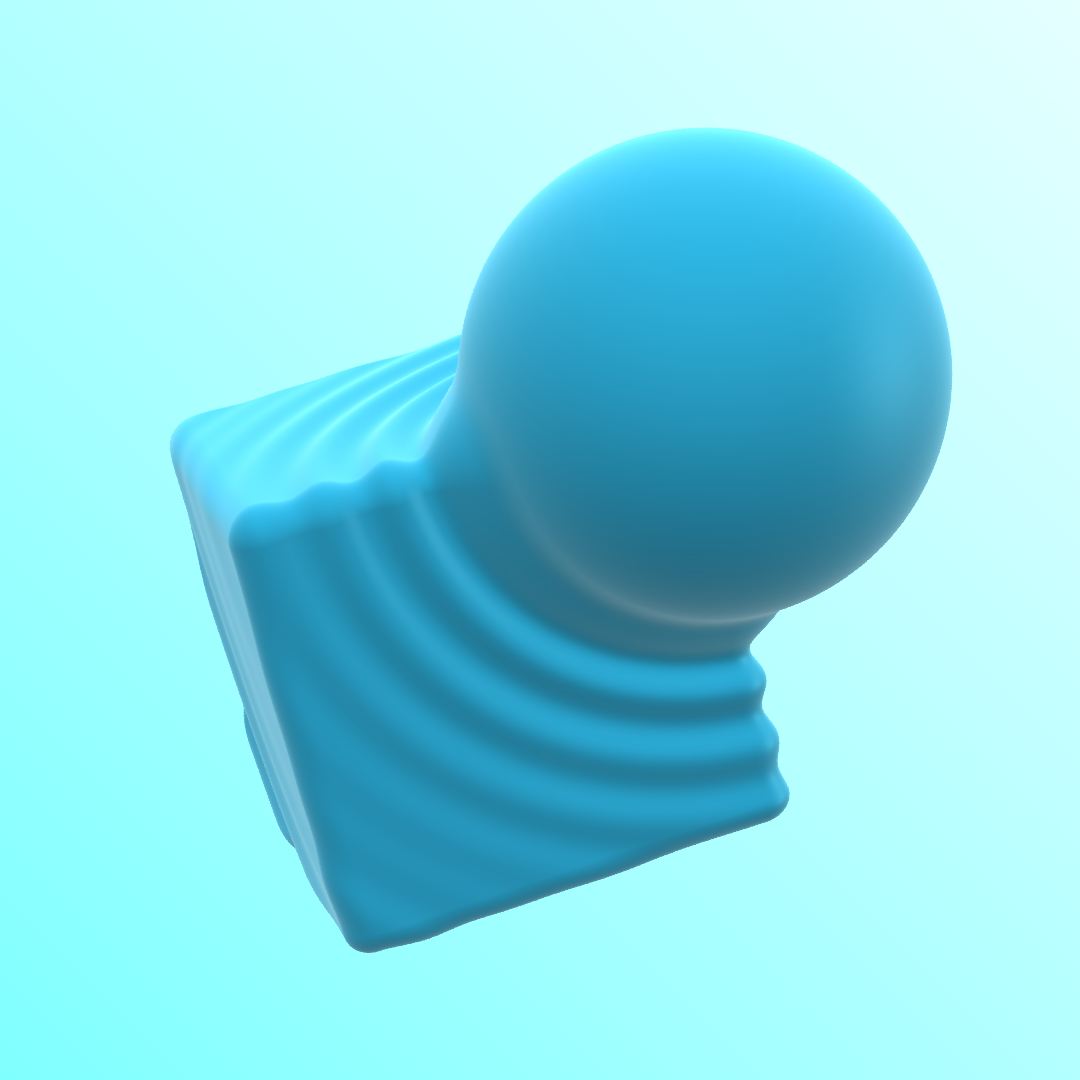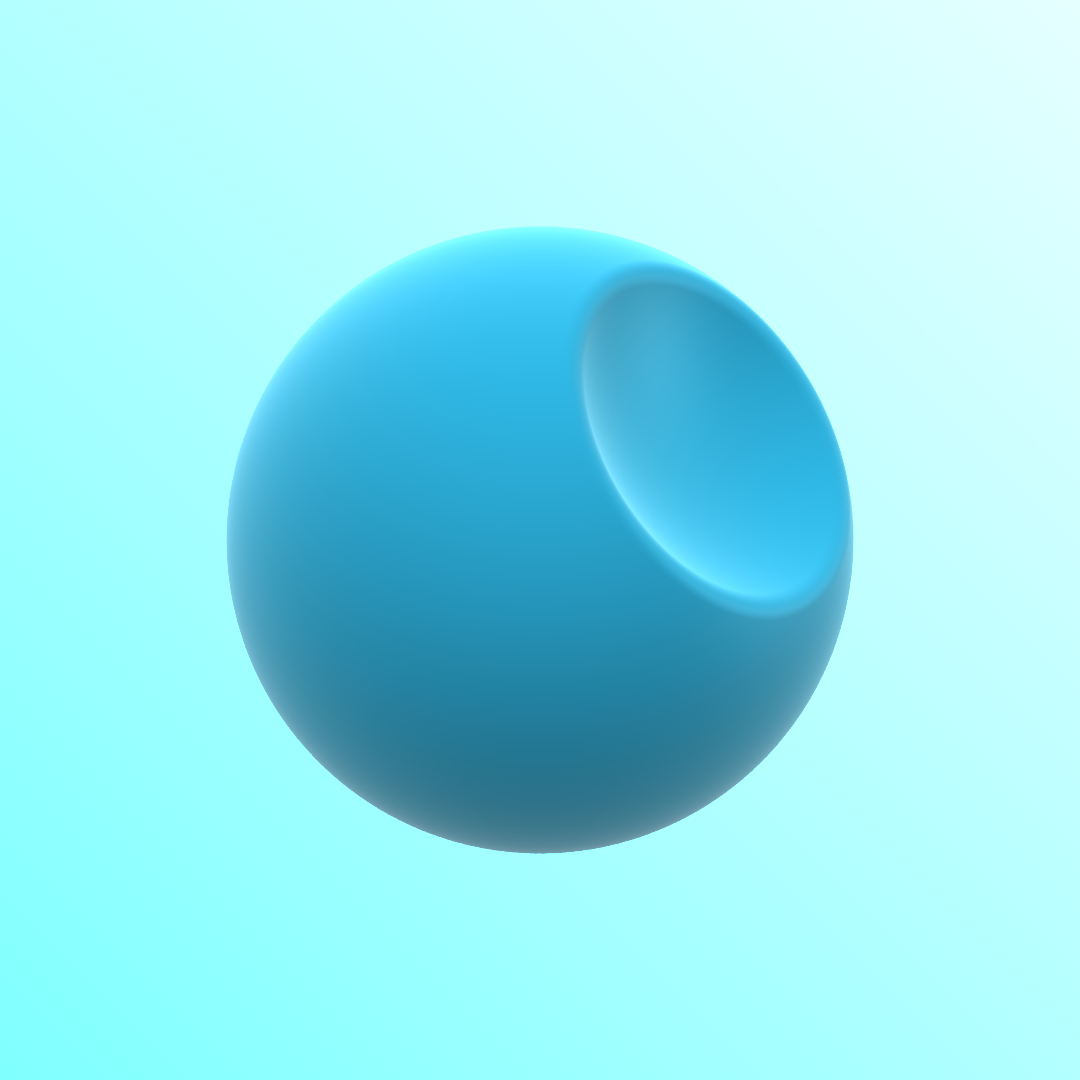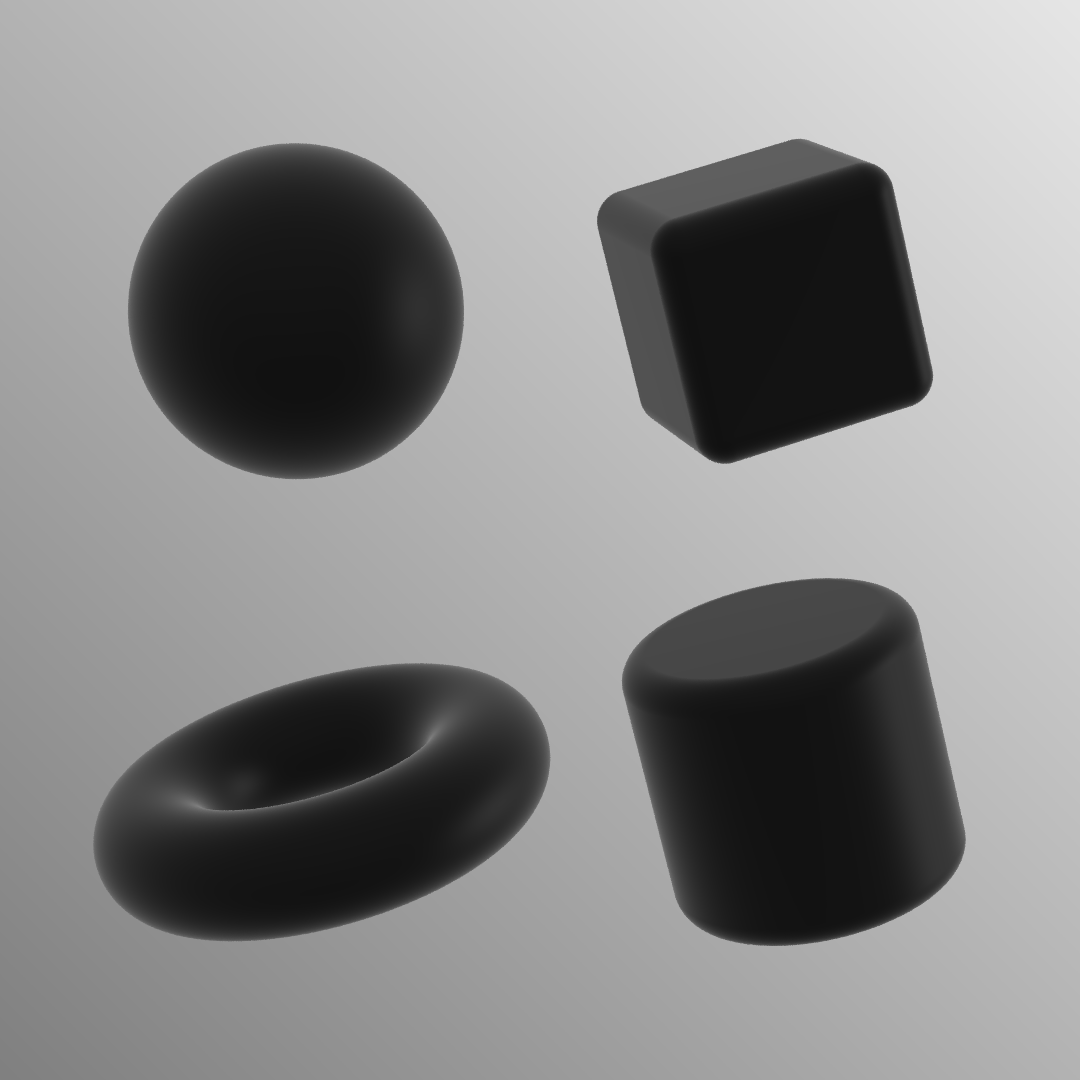Multi-threaded using Rayon
Reworked to mirror structure of my Shadertoy ray marcher.
Ray marching is a rendering technique similar to ray tracing that relies on a different method of finding the intersection between the ray and rendered geometry. This method is usually used to render geometry created with Signed Distance Fields (SDFs) rather than polygons. SDFs are awesome because you can perform all sorts of displacement, mixing, and boolean operations without worrying about triangle intersections.
Originating from the camera, each ray "marches" through the scene, evaluating the SDF at each step to determine how far it can safely travel without running into anything. See my Shadertoy demo for a 2D breakdown of how it works.
This ray marcher renders an SDF scene defined in the eval() function. Below is a sample scene defined as follows:
fn eval(p) -> f64 {
let s1 = _sphere(p, point![0.0, 0.0, 0.0], 1.);
let s2 = _sphere(p, point![1., -0.6, -1.], 0.9);
return _smooth_subtraction(s1, s2, 0.05);
}The resolution and number of samples (for anti-aliasing) are specified in render() in main.rs:
render(x_res, y_res, sample_count);When compiled and run, the image will be rendered to output.png
cargo run --release
 A smooth union of a sphere and a cube displaced based on the sphere's distance function.
A smooth union of a sphere and a cube displaced based on the sphere's distance function.
The shading is a simple setup designed to look nice but not physically accurate. This can be changed by modifying the simple_shading() and sky() functions.
Certain SDFs may present artifacts when ray marching, such as "bound" or non-exact SDFs and SDFs with union/subtraction/intersections in some cases. To improve the quality of the render, adjusting the ray marching constants may help.
pub const MAX_STEPS: usize = 500; // Maximum number of ray marching steps
pub const MAX_DIST: f64 = 100.; // Maximum distance for ray marching
pub const SURF_DIST: f64 = 0.0001; // SDF value that registers a "hit"
pub const STEP_SCALE: f64 = 1.0; // Modified step scale to help prevent artifacts (<=1) A (smooth) boolean subtraction operation
A (smooth) boolean subtraction operation
 Linear interpolation between a sphere and a box
Linear interpolation between a sphere and a box
Most of the distance functions are based on Inigo Quilez's (iq) shaders & functions https://iquilezles.org/.
(Learning from the mistakes of an over-engineered version that didn't work as well)
References
